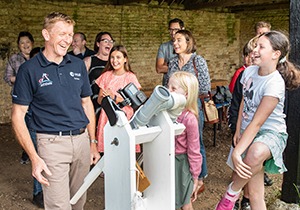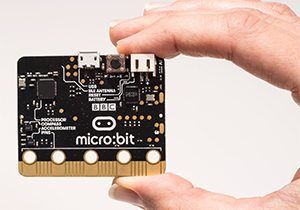Follow your food!
We take a juicy journey through your digestive system!
You eat a meal. And then a bit later… you do a poo! But what happens in between? NG KiDS takes a juicy journey down through your digestive system to find out where your grub goes…
It takes around 24 hours for your dinner to wind its way through the nine-metre-long digestive tract. On its trip, it’s mixed with acids and digestive juices, and squeezed and squelched until all the nutrients that the body needs are absorbed. Then, the smelly leftovers, along with billions of dead bacteria, are ready to exit the body. Plop! Let’s follow your food to learn about the brilliant bits of our bodies that make up the digestive system.
1. MOUTH
It all starts here! Up to 28 strong teeth* chomp your food, breaking it into smaller bits. Meanwhile, the tongue keeps moving the food around, shifting it to the type of teeth that will be best at munching it. It also squeezes the chewed grub into swallowable lumps, pushing them back towards the throat. Gulp!
Fast fact: When you swallow, a little flap of cartilage called the epiglottis closes off the windpipe so food doesn’t go down there by mistake.
*Most grown-ups have 32 teeth. You usually grow four ‘wisdom’ teeth between the ages of 17 and 24.
2. OESOPHAGUS
Also known as the gullet, this 25cm-long tube contracts to shift chewed food down to your stomach. The squeezing motion of the muscles is called peristalsis and it occurs throughout the digestive system. A slimy mucus is also oozed from the oesophagus to help the food on its way. Easy does it!
Fast fact: Thanks to peristalsis, food would get to your stomach even if you were standing on your head!
3. STOMACH
Next stop – the stomach! This stretchy muscular bag is about the size of a tennis ball when it’s empty, but expands to the size of a football to store a massive meal. As soon as food plops inside, the stomach lining releases digestive juices and acid that break down the food even more, killing harmful bacteria. Muscles slosh and squelch the food together with the juices until it becomes a sloppy soup called chyme that’s ready to be squirted into the small intestine…
Fast fact: The acid in your stomach is so strong it could dissolve an iron nail!* To stop your stomach digesting itself, it’s lined with a protective mucus, and your stomach cells are replaced every few days.
* Please do not eat a nail. Ever.
4. SMALL INTESTINE
Despite the name, this section of your digestive tract is really not that small – it’s a whopping 6.5-metres-long! It’s in this 3cm-wide tube that all the nutrients in your mushed-up food pass through the small-intestine lining into the blood. Once all the goodness is gone, the sloppy mixture passes to the next part of the intestines…
Fast fact: The lining of the small intestine is covered with teeny finger-like bumps called “villi”. They give the lining a large surface area to help with absorption.
5. LARGE INTESTINE
More than twice as wide as the small intestine, but only 1.5-metres-long, the job of the large intestine is to soak up water, salts and minerals from the indigestible leftovers. Finally, the remaining semi-solid waste, called faeces, travels to the lower colon and rectum for storage. When you go to the loo, a ring of muscle called the anus relaxes to allow the poo out! Super and stinky!
Fast fact: Your small and large intestines together are known as your bowels!
A. SALIVARY GLANDS
Most of the slimy liquid in your mouth is produced by three pairs of salivary glands. This saliva moistens food, making it easier to swallow. It’s also full of chemicals called enzymes that help to break down food. Amazingly, just the smell of good grub can make your mouth start to water!
Fast fact: Your salivary glands can produce up to six cups of saliva per day. Squelch!
B. LIVER
This busy brown organ is your largest internal organ and has about 500 different jobs! It’s like a chemical processing factory – blood carries nutrients there from the small intestine, then the liver decides what to do with them. It also gets rid of toxins (substances that can be harmful to the body), recycles old blood cells, makes bile and other digestive juices, and produces, stores and releases glucose (to give you energy).
Fast fact: About one third of the body’s blood flows through the liver every minute!
C. GALLBLADDER
The role of this green, pear-shaped organ is to store bile and make it thicker and stronger before adding it to the small intestine.
D. PANCREAS
Your pancreas makes chemicals called enzymes which help digest nutrients in your food. It also makes insulin, a hormone which helps control your blood sugar levels.
E. APPENDIX
Doctors used to think that this thin little organ was useless – a leftover body part from early humans. But today it’s thought that the appendix stores “good bacteria” that can help your digestive system work again after you’ve been poorly.
Images taken from SuperHuman Encyclopedia, published by DK priced £16.99. Find out more at dk.com. With thanks to Dr Dewi Byrne.
More Like General Science

Female wildlife rangers!

Experience a Summer of Discovery

BBC micro:bit – what’s it all about?













LEAVE A COMMENT
THANK YOU
Your comment will be checked and approved shortly.
WELL DONE,
YOUR COMMENT
HAS BEEN ADDED!
COMMENTS
I love the article!
Thanks for all this information about the human body,its very interesting.
Cool but i still think the stomach can expand more than a football.
i love science!
this is epic LOL !
That is so cool! I've always wanted to see what the appendix looks like because my father got appendicitis.
cool yo
my nan is awsome
lol rekt
LOLLLLLLL
lol my nan
very nice pics!!
asum e
wow
Now this just feels right.
It is interesting but that is another word for poo
Wow! this was a crazy website BTW love my avatar!
scary
hi f.r.i.e.n.d.s is awesome i like season 8 and emma is cute. MOO
what are the two types of digestion? please help!!!!!
That really happens in my body?!?
weird but true!
this is so weird but cool
Cool!
Wow! I never knew what happened when food got digested
this is sooooooooooo interesting I used this for homework about the rainforest :)
Cool
Helpful facts
Awesome!
These facts are cool
that is sooooo cool
that is nice
I am hungry
awesome!
cccoooolllll!!!!!!
this is so good Im at school,
wow I did not know all that, but now I do, yay!!!
Wow, thats awesome!
cool!!!!!!
Wow!! Really interesting fact about tummy rumbles! They have explained the facts thouroughly which makes it really interesting
this is awesome
hi everybody i think this is cool do you
I did not know that
awsome
I just learn this and it was great!
That is ssssssooooooooo interesting!!!!! I really, really want to be a Doctor when I grow up
That is so so so so so good I never new that
WOWERS
its amazing everyone has that inside them
I did not know that, it was cool!
I was thinking what to do for school when I thought why not this it got a very good explanation of how you digest your food
I am doing a bit about the body so this was very useful.
CUSTOMIZE YOUR AVATAR